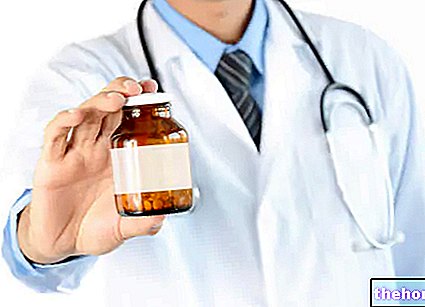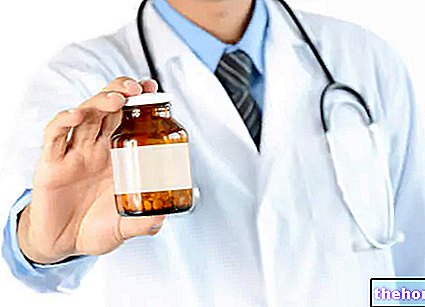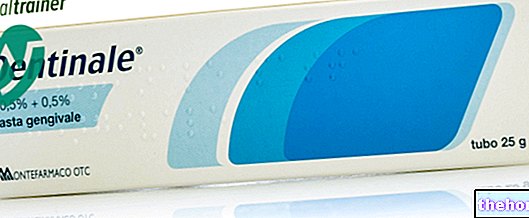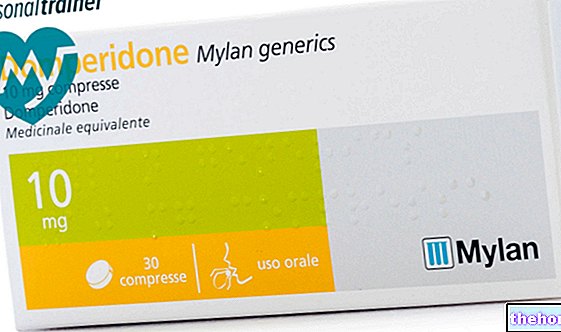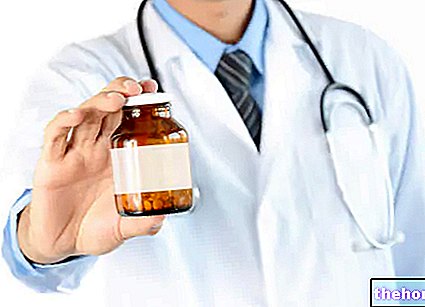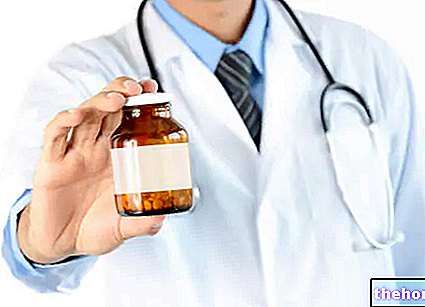Active ingredients: Fluocinolone acetonide, Ketocaine hydrochloride
Proctolyn 0.1 mg / g + 10 mg / g rectal cream
Proctolyn package inserts are available for pack sizes:- Proctolyn 0.1 mg / g + 10 mg / g rectal cream
- Proctolyn 0.1 mg + 10 mg suppositories
Why is Proctolyn used? What is it for?
Proctolyn contains two active ingredients: fluocinolone acetonide (glucocorticoid) which acts against inflammation and ketocaine hydrochloride (local anesthetic) which reduces sensitivity in the area where it is applied.
Proctolyn belongs to a group of medicines called "antihemorrhoids" (against hemorrhoids) and is used:
- in the local treatment of internal and external hemorrhoids
- in inflammation and irritation of the skin in the anal area and near the anus (eczema and erythema)
- in itching and burning in the anal area and near the anus
- in lesions at the level of the anus with slow healing (anal fissures)
- in the anal area before and after surgery (anorectal surgery).
Proctolyn works locally by reducing inflammation, redness (congestion), itching, anal burning and indirectly pain.
Talk to your doctor if you do not feel better or if you feel worse after a short period of treatment.
Contraindications When Proctolyn should not be used
Do not use Proctolyn
- if you are allergic to fluocinolone acetonide, ketocaine hydrochloride or any of the other ingredients of this medicine (listed in section 6)
- if you are allergic to other medicines belonging to the same family (glucocorticoids such as flumethasone, triamcinolone, dexamethasone, diflucortolone, fluocinonide, diflorasone)
- if you have tuberculosis (TB)
- if you have fungal diseases (mycosis)
- if you have virus diseases (Herpes Symplex) and other viral diseases localized on the skin.
Precautions for use What you need to know before taking Proctolyn
Talk to your doctor or pharmacist before using Proctolyn:
- if the aforementioned disorders have already occurred in the past
- if you are pregnant or breastfeeding (see pregnancy and breastfeeding section)
- if you are a child under 12 years of age (see Children section).
Local application of Proctolyn in excessive doses and for prolonged periods can lead to the passage of the medicine into the body (systemic absorption) and cause the appearance of other undesirable effects in addition to those locally.
Furthermore, the use, especially if prolonged, of medicines for local use can give rise to allergic reactions. In this case, stop using Proctolyn and consult your doctor who will indicate an appropriate therapy.
In the presence of a "skin infection," appropriate antibiotic therapy must be initiated. Proctolyn is not used for the eyes and must not come into contact with the eyes.
For those who carry out sporting activities: the use of the drug without therapeutic necessity constitutes doping and can in any case determine positive anti-doping tests.
Children
In children under the age of 12 Proctolyn should only be used after consulting your doctor and evaluating the risks and benefits of treatment with him.
Interactions Which drugs or foods can modify the effect of Proctolyn
Tell your doctor or pharmacist if you are using, have recently used or might use any other medicines.
No interactions with other medicinal products are known.
Warnings It is important to know that:
Pregnancy and breastfeeding
If you are pregnant or breast-feeding, think you may be pregnant or are planning to have a baby, ask your doctor or pharmacist for advice before using this medicine.
In fact, during pregnancy and breastfeeding Proctolyn should only be used after consulting your doctor and evaluating with him the risks and benefits deriving from the treatment.
Driving and using machines
Proctolyn does not affect the ability to drive and use machines.
Proctolyn contains
- methyl para-hydroxybenzoate and propyl para-hydroxybenzoate which can cause allergic reactions (even delayed);
- cetyl alcohol and stearyl alcohol which can cause localized skin reactions (e.g. contact dermatitis);
- propylene glycol which can cause skin irritation.
Dose, Method and Time of Administration How to use Proctolyn: Posology
Always use this medicine exactly as described in this leaflet or as directed by your doctor or pharmacist. If in doubt, consult your doctor or pharmacist.
The recommended dose is a quantity of rectal cream sufficient to cover the affected area, to be applied 2-3 times a day.
Warning: do not exceed the indicated dose without your doctor's advice.
External application: smear and massage lightly.
Internal application: use the special cannula inserted on the tube.
Rectal cream can be used with Proctolyn suppositories for combined treatments.
Consult your doctor if the disorder occurs repeatedly or if you have noticed any recent changes in its characteristics.
Warning: use Proctolyn only for short periods of treatment.
Use in children
In children under the age of 12 Proctolyn should only be used after consulting your doctor and evaluating the risks and benefits of treatment with him.
Overdose What to do if you have taken too much Proctolyn
If you use more Proctolyn than you should
In case of accidental overdose of Proctolyn, notify your doctor immediately or go to the nearest hospital.
If you forget to use Proctolyn
Do not use a double dose to make up for a forgotten dose.
If you have any further questions on the use of this medicine, ask your doctor or pharmacist.
Side Effects What are the side effects of Proctolyn
Like all medicines, this medicine can cause side effects, although not everybody gets them.
For intense and prolonged treatments, the following may occur:
- burning sensation
- itch
- irritation.
These side effects are generally transient. If they show up, consult your doctor or pharmacist.
Reporting of side effects
If you get any side effects, talk to your doctor or pharmacist. This includes any possible side effects not listed in this leaflet. You can also report side effects directly via the national reporting system at https://www.aifa.gov.it/content/segnalazioni-reazioni-avverse.
By reporting side effects you can help provide more information on the safety of this medicine.
Expiry and Retention
This medicine does not require any special storage conditions. Keep this medicine out of the sight and reach of children.
Do not use this medicine after the expiry date which is stated on the carton after "Expiry". The expiry date refers to the last day of that month.
Do not throw any medicines via wastewater or household waste. Ask your pharmacist how to throw away medicines you no longer use. This will help protect the environment.
It is important to have the information about the medicine available at all times, so keep both the box and the package leaflet.
Composition and pharmaceutical form
What Proctolyn contains
- The active ingredients are fluocinolone acetonide and ketocaine hydrochloride. One gram of rectal cream contains 0.1 mg of fluocinolone acetonide and 10 mg of ketocaine hydrochloride (equivalent to 8.9 mg of ketocaine).
- The other ingredients are citric acid, menthol, methyl parahydroxybenzoate, propyl parahydroxybenzoate, propylene glycol, stearyl alcohol, cetyl alcohol, petroleum jelly, sorbitan monostearate, polysorbate 60, purified water.
What Proctolyn looks like and contents of the pack
Proctolyn comes in the form of a cream for rectal use. It is available in 20g tube and 30g rectal cream.
Source Package Leaflet: AIFA (Italian Medicines Agency). Content published in January 2016. The information present may not be up-to-date.
To have access to the most up-to-date version, it is advisable to access the AIFA (Italian Medicines Agency) website. Disclaimer and useful information.
01.0 NAME OF THE MEDICINAL PRODUCT
PROCTOLYN
02.0 QUALITATIVE AND QUANTITATIVE COMPOSITION
Rectal cream
One gram of rectal cream contains 0.1 mg of fluocinolone acetonide and 10 mg of ketocaine hydrochloride (equivalent to 8.9 mg of ketocaine).
Excipients with known effects:
One gram of rectal cream contains 1.5 mg of methyl para-hydroxybenzoate, 0.5 mg of propyl para-hydroxybenzoate, 70 mg of propylene glycol, 50 mg of stearyl alcohol, 50 mg of cetyl alcohol.
Suppositories
Each suppository contains 0.1 mg of fluocinolone acetonide and 10 mg of ketocaine hydrochloride (equivalent to 8.9 mg of ketocaine).
Excipient with known effects:
each suppository contains 40 mg of propylene glycol.
For the full list of excipients, see section 6.1.
03.0 PHARMACEUTICAL FORM
Rectal cream.
Suppositories.
04.0 CLINICAL INFORMATION
04.1 Therapeutic indications
Internal and external hemorrhoids; anal and perianal eczema and erythema; anal fissures; anal and perianal itching and burning; pre- and post-operative treatment in anorectal surgery.
04.2 Posology and method of administration
Rectal cream
Just enough to cover the affected part by massaging lightly and repeating the application 2-3 times a day.
For internal application, use the special cannula inserted on the tube.
Suppositories
1 suppository in the morning and 1 in the evening.
Rectal cream and suppositories can be used for combined treatments.
Pediatric population
Proctolyn is not recommended for use in children below 12 years of age due to a lack of data on safety and efficacy.
04.3 Contraindications
Hypersensitivity to the active substances or to any of the excipients listed in section 6.1.
Tbc, mycosis, Herpes Symplex, viral diseases with skin localization.
04.4 Special warnings and appropriate precautions for use
The topical application of cortisone in excessive doses and for prolonged periods can cause systemic absorption.
The use, especially if prolonged, of products for topical use can give rise to sensitization phenomena.
In the presence of a skin infection, appropriate coverage therapy should be instituted.
Rectal cream:
The product contains methyl para-hydroxybenzoate and propyl para-hydroxybenzoate which can cause allergic reactions (including delayed type).
The medicine also contains stearyl alcohol and cetyl alcohol which can cause local skin reactions (eg contact dermatitis).
Rectal cream and suppositories:
Due to the presence of propylene glycol, the product can cause skin irritation.
04.5 Interactions with other medicinal products and other forms of interaction
Not known.
04.6 Pregnancy and lactation
Pregnancy
Topical administration of corticosteroids during pregnancy in laboratory animals can cause abnormalities in fetal development. There are no adequate data from the use of fluocinolone acetonide in pregnant women. Therefore the medicinal product should only be used as needed, after weighing the expected benefit to the mother in relation to the possible risk to the fetus.
Feeding time
When administered systemically, corticosteroids are excreted through breast milk. It is not known whether they are even when administered topically. Therefore, topical corticosteroids should be used with caution during lactation.
04.7 Effects on ability to drive and use machines
Proctolyn does not affect the ability to drive or use machines
04.8 Undesirable effects
During topical cortisone therapy, especially for intense and prolonged treatments, the following side effects may occur: burning sensation, itching, irritation.
Reporting of suspected adverse reactions
Reporting of suspected adverse reactions occurring after authorization of the medicinal product is important as it allows continuous monitoring of the benefit / risk balance of the medicinal product. Healthcare professionals are asked to report any suspected adverse reactions via the national reporting system. "address www.agenziafarmaco.gov.it/it/responsabili.
04.9 Overdose
No cases of overdose have been reported.
05.0 PHARMACOLOGICAL PROPERTIES
05.1 Pharmacodynamic properties
Pharmacotherapeutic group: anti-haemorrhoidal for topical use based on corticosteroids.
ATC code: C05AA.
Fluocinolone acetonide is a steroid which, when applied locally, has an "intense anti-inflammatory action.
Ketocaine hydrochloride is a local anesthetic, used as a surface anesthetic.
05.2 Pharmacokinetic properties
At normal therapeutic doses the action takes place locally and systemic absorption is irrelevant.
05.3 Preclinical safety data
There is no information, deriving from preclinical data, of significant importance to the physician that has not already been reported in the other sections of the Summary of Product Characteristics.
06.0 PHARMACEUTICAL INFORMATION
06.1 Excipients
Rectal cream
citric acid;
menthol;
methyl para-hydroxybenzoate;
propyl para-hydroxybenzoate;
propylene glycol;
stearyl alcohol;
cetyl alcohol;
Vaseline oil;
sorbitan monostearate;
polysorbate 60;
purified water.
Suppositories
citric acid;
menthol;
propylene glycol;
polysorbate 60;
sorbitan monostearate;
colloidal silica;
semisynthetic glycerides.
06.2 Incompatibility
There are no known cases of chemical-physical incompatibility with other substances.
06.3 Period of validity
3 years.
The expiry date refers to the product in intact packaging, correctly stored.
06.4 Special precautions for storage
This medicine does not require any special storage conditions.
06.5 Nature of the immediate packaging and contents of the package
Rectal cream : aluminum tubes protected inside with a double layer of protective paint.
20 g and 30 g tube.
Suppositories : PVC shells.
Box of 10 suppositories.
Not all pack sizes may be marketed.
06.6 Instructions for use and handling
No special instructions.
Unused medicine and wastes derived from this medicine must be disposed of in accordance with local regulations.
07.0 MARKETING AUTHORIZATION HOLDER
RECORDATI Chemical and Pharmaceutical Industries S.p.A. - Via M. Civitali, 1 - 20148 Milan.
08.0 MARKETING AUTHORIZATION NUMBER
Proctolyn 0.1 mg / g + 10 mg / g rectal cream - 20 g tube A.I.C. n. 021925019
Proctolyn 0.1 mg / g + 10 mg / g rectal cream - 30 g tube A.I.C. n. 021925060
Proctolyn 0.1 mg + 10 mg suppositories - 10 suppositories A.I.C. n. 021925045
09.0 DATE OF FIRST AUTHORIZATION OR RENEWAL OF THE AUTHORIZATION
Date of first authorization: 11.07.1969
Date of latest renewal: 31.05.2010
10.0 DATE OF REVISION OF THE TEXT
27/04/2015

